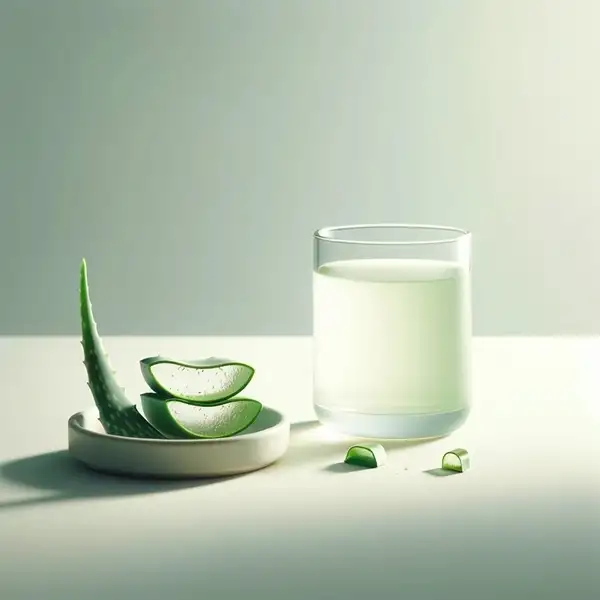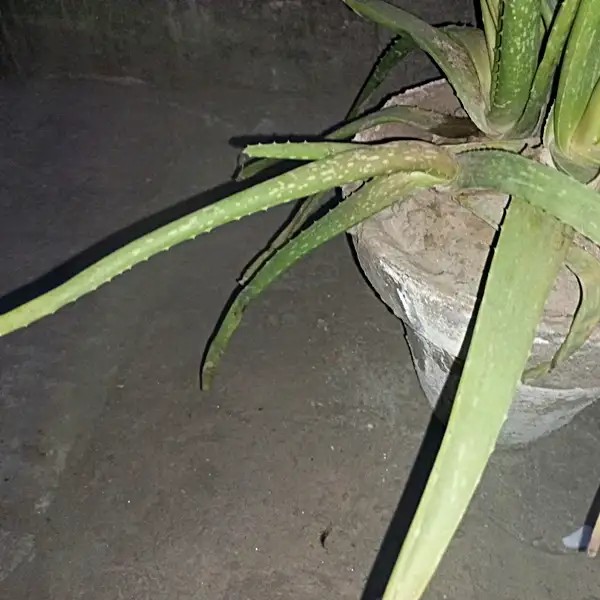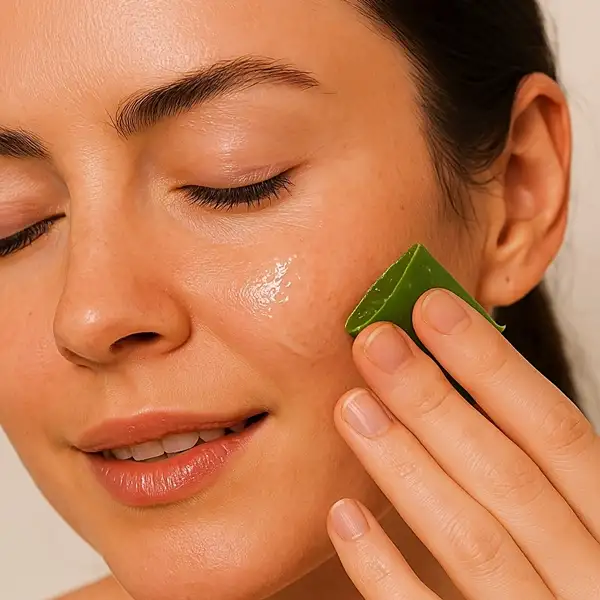Key Takeaways
| Key Takeaways | What You’ll Learn |
|---|---|
| Creating the Perfect Growing Environment | How to care for aloe vera plants? Discover the ideal balance of light, temperature, and soil. |
| Mastering the Art of Watering | Learn how to avoid the most common mistake that kills aloe plants. |
| Preventing Common Aloe Vera Issues | Find out what symptoms to watch for and how to fix them. |
| Effortless Propagation & Repotting | Unlock the secrets to multiplying your aloe vera collection. |
| The Hidden Benefits of Aloe Vera | Explore the remarkable ways aloe vera enhances daily life. |
Basics of Aloe Vera Plant Care
I remember the first time I introduced aloe vera to my plant collection – a decision inspired by years of working in botanical research where I studied drought-resistant plants.
Through hands-on experimentation, I discovered essential strategies for anyone wondering how to care for aloe vera plant. These insights are now a cornerstone of my plant-care practices, helping ensure thriving growth.
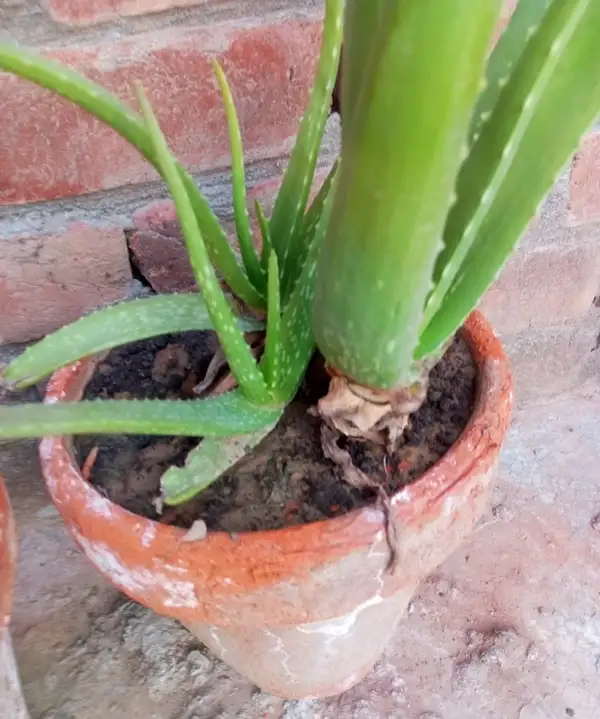
Aloe vera is a resilient succulent often used for its medicinal properties. It has risen in popularity around the world as an excellent indoor houseplant. Renowned for its diluted green hue & spiky appearance, this low-maintenance companion thrives with modest care – a factor making it popular among novice horticulturists and experienced plant enthusiasts alike.
- Native to the Arabian Peninsula but eco-culturally globalized over centuries, aloe vera or “true aloe” has adapted optimally to arid climates. This resilience equips an indoor-grown specimen with surprising hardiness.
- However, most healthy growth is achieved by mimicking conditions found in natural semi-tropical habitats such as bright light and adequate drainage.
- Simultaneously, the versatility of a carefully grown Aloe Vera gets reflected in myriad functional uses – from cosmetic utility due to high moisture content beneficial for skin therapeutic applications; marking it not just ecologically beneficial but commercially valuable as well.
- One statistic says that –
“The global market value of Aloe vera extracts was $ 1.6 billion in 2015 which is projected to exceed $3.9 billion in 2027”.
Maintaining an at-home potted plant can be both an attention-grabbing hobby endeavor & potentially nourishing resource trove.
3 Ideal Conditions for a Healthy Aloe Vera
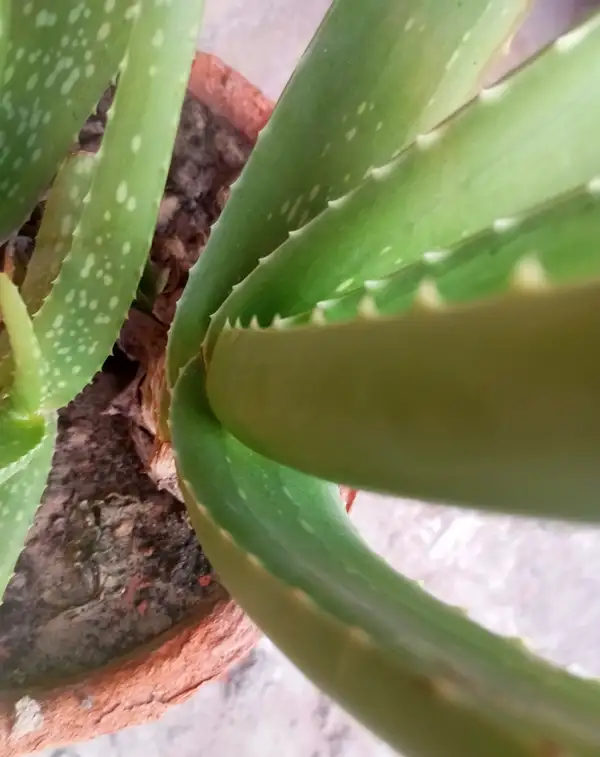
An essential aspect of how to care for aloe vera plant involves choosing the right environment to replicate its native arid landscape. When contemplating suitable environments for your aloe vera’s optimal growth potential, consider factors such as:
| Condition | Optimal Requirements |
|---|---|
| Light | – Bright, indirect sunlight is ideal. 🌞 – Place near a west or south-facing window. 🪟 – Avoid low light to prevent leggy growth. 🚫🌑 |
| Temperature | – The Old Farmer’s Almanac recommends an average indoor room temperature between 55 and 80 degrees Fahrenheit 🌡️ for aloe vera plants with exceptions made for cooler summer nights. – Protect from cold drafts and intense heat sources. ❄️🔥 – Suitable for typical indoor conditions. |
| Soil, Potting & Pot Selection | – Use well-draining soil, such as cactus or succulent mix. 🌵 – Incorporate perlite or sand to enhance drainage. 🏝️ – Choose pots with drainage holes to prevent waterlogging. 🪴 |
#1 Mistake by Beginners
- According to different plant research centers –
“The most common mistake made by beginners when caring for their first aloe vera plant is failing to identify the correct sun exposure level.”
- Since aloes utilize CAM photosynthesis (Crassulacean Acid Metabolism), designed to conserve water in periods of extreme drought, they are able to photosynthesize at night & close their stomata during the day preventing needless transpiration.
3 Essential Care Tips: Watering & Fertilizing
| Aspect | Guidelines |
|---|---|
| Watering Frequency | – Allow soil to dry out completely between waterings 🌵 – Typically, water every 7-10 days during active growth (spring and summer) 📅 – Reduce frequency in fall and winter ❄️ – Keep in mind, neglect is this plant’s best friend! |
| Watering Method | – Water thoroughly until excess drains out 💧 – Ensure no standing water remains in the saucer 🚫💦 – Avoid watering from above to prevent leaf rot; water at soil level 🌿 |
| Fertilizing | – Apply a balanced & water-soluble fertilizer (10-40-10 NPK) during growing season 🌱 – Dilute potency fertilizer to half strength to prevent overfeeding 🥄 – Fertilize once a month in spring and summer; avoid fertilizing in fall and winter 📆 |
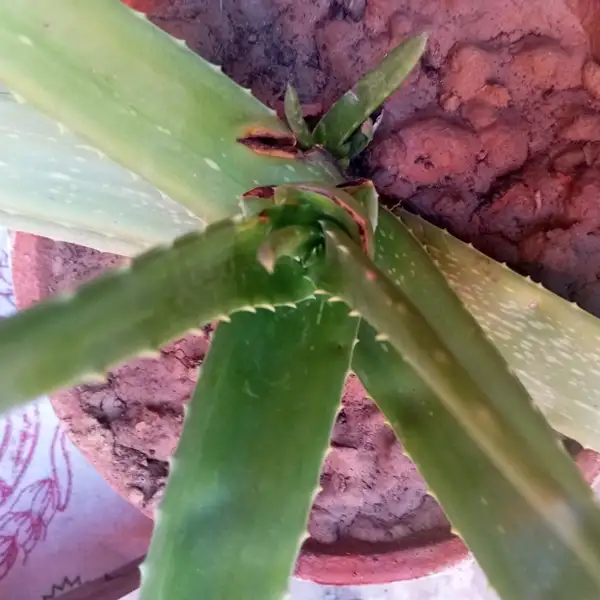
NPK Ratio: The numbers 10-40-10 on a fertilizer label represent NPK ratio which indicates percentages of 3 key nutrients in a fertilizer:
- Nitrogen (N): 10% – Promotes leaf & foliage growth
- Phosphorus (P): 40% – Encourages root development & flowering
- Potassium (K): 10% – Supports overall plant health & disease resistance
In this ratio, high phosphorus content is particularly beneficial for promoting blooming & root development. It makes it ideal for plants like aloe vera when encouraging flowers or robust growth.
3 Common Diseases in Aloe Vera Plants
Despite this plant’s ruggedness, it is still susceptible to a variety of illnesses. Identifying these ailments early can prevent them from destroying your plant:
| Disease | Symptoms | Prevention & Treatment |
|---|---|---|
| Root Rot | – Mushy & brown roots 🥀 – Yellowing or wilting leaves 🍂 – Unpleasant odor from soil 👃 |
– Avoid overwatering; let soil dry between two waterings 🚫💧 – Use well-draining soil & pots with drainage holes 🪴 – If affected, remove diseased roots and repot in fresh soil 🛠️ |
| Leaf Spot | – Brown or black spots on leaves ⚫ – Spots may have a yellow halo 🌕 – Leaves may become soft or mushy 🥀 |
– Ensure good air circulation around aloe vera 🌬️ – Avoid overhead watering; water at soil level 🚫💦 – Remove and dispose of affected leaves promptly ✂️ |
| Pest Infestations | – Presence of small insects like aphids, mealybugs or scale 🐛 – Sticky residue on leaves 🍯 – Deformed or discolored leaves 🍃 |
– Inspect plants regularly for signs of pests 🔍 – Wipe leaves with a solution of mild soap and water 🧼 – For severe infestations, consider using insecticidal soap or neem oil 🛡️ |
Step-by-Step Guides to Propagate & Repot Your Aloe Vera
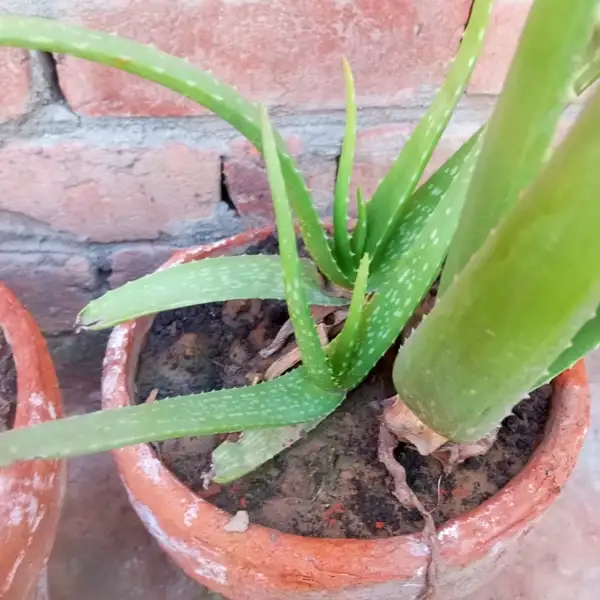
4 Steps to Repot Aloe Vera Plant Easily
Re-potting should ideally be done after two years, when the roots have filled their container and are pushing the boundaries.
- Gently working around the root ball and progressively removing old compost makes the process easier.
- Re-pot in the spring, when the plant is waking up, and place it in a new container with enough space to explore.
- Temporary outdoor exposure is advised.
- At the same time, a mature aloe plant will produce offshoots at its base that can be propagated, paving the way for expanding your nurturing collection of easy-to-care-for plants!
4 Steps to Propagate Aloe Vera
- On the other hand, propagation is best done using “pup” recruits – juvenile aloes that sprout from the edges of adult plants after they have matured.
- These independent entities, with their mini nodal structures, should be cut at an angle to minimize damage.
- The healing phase might take weeks, so it’s wise to avoid watering too soon.
- Once dried and hardened, the young ones are ready to find fresh, loam-based homes.
Growing any plant can have its trials & triumphs but understanding its inherent nature & unique features always acts like a head-start in the journey to achieving green pastures abundantly!
Frequently Asked Questions
Do Aloe plants need lots of sunlight?
Aloe thrives in medium sunlight. Too much direct light can scorch leaves & turn them yellow.
Can I grow my aloe with other succulents?
Yes! Just ensure all plants have similar watering & light needs.
Under what indoor conditions does Aloe work best?
Keep aloe in a cool room with bright & indirect sunlight & well-draining soil.
What kind of warning signals should one look for before it's too late to save my aloe from dying?
Watch for stunted growth, brown patches or drying leaves - signs it needs better care or repotting.






